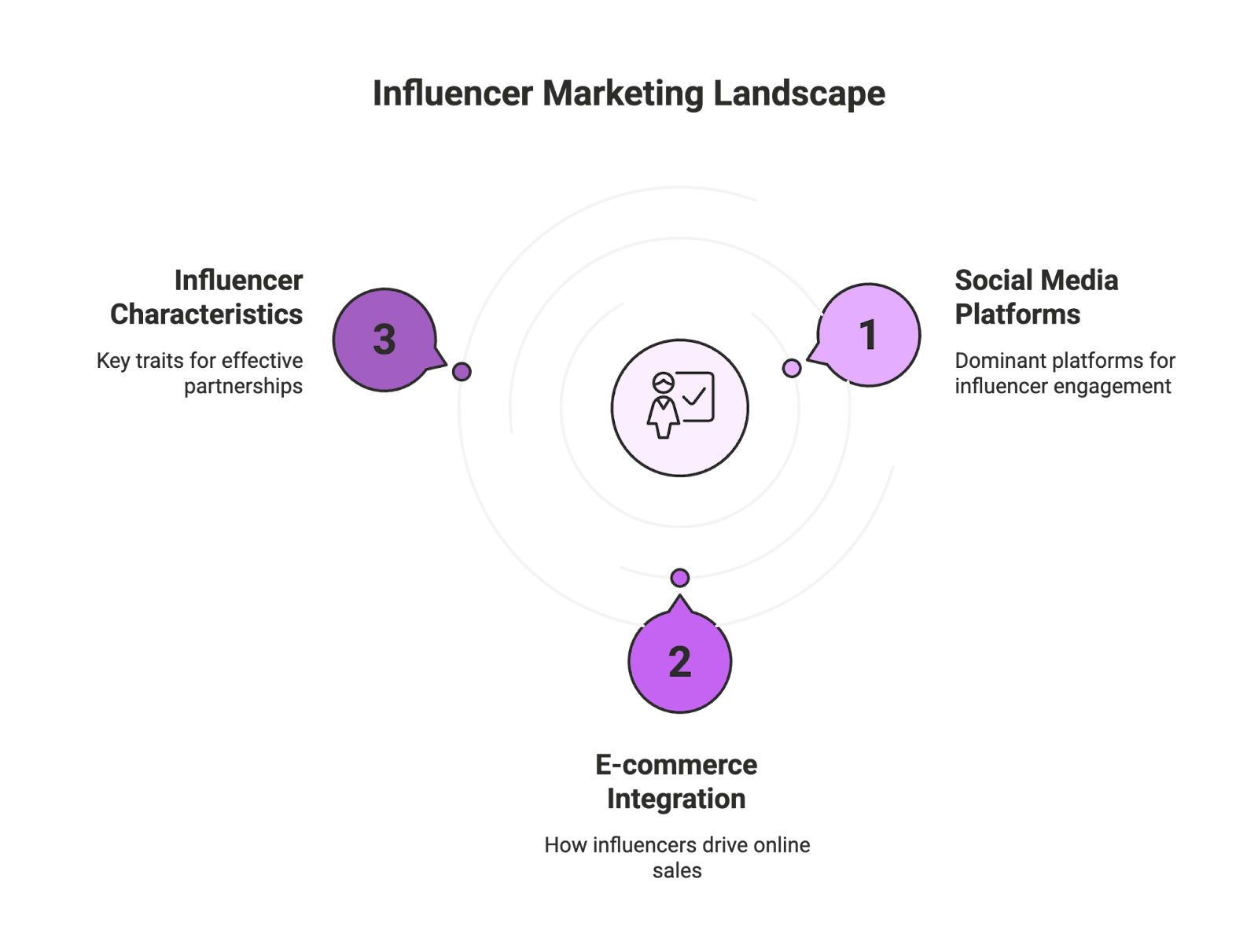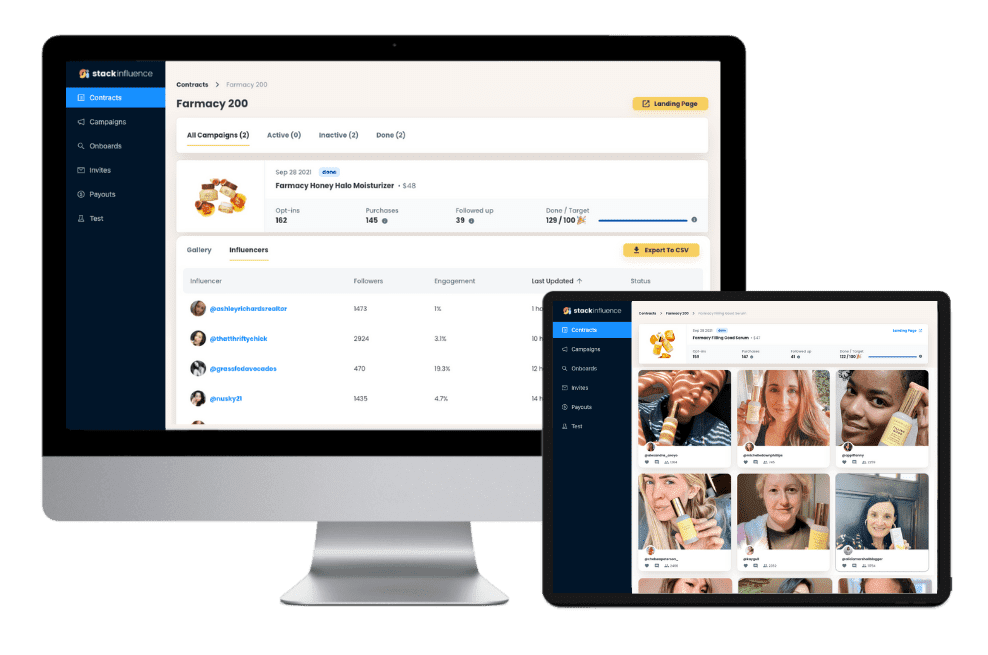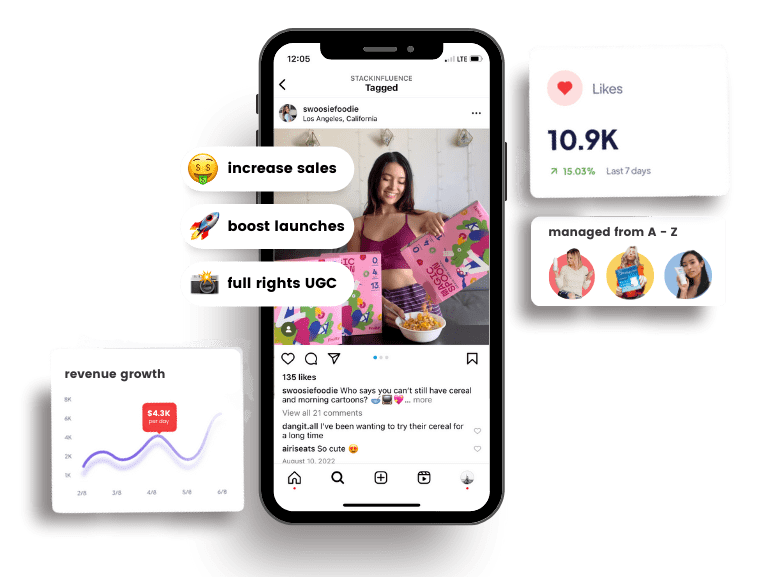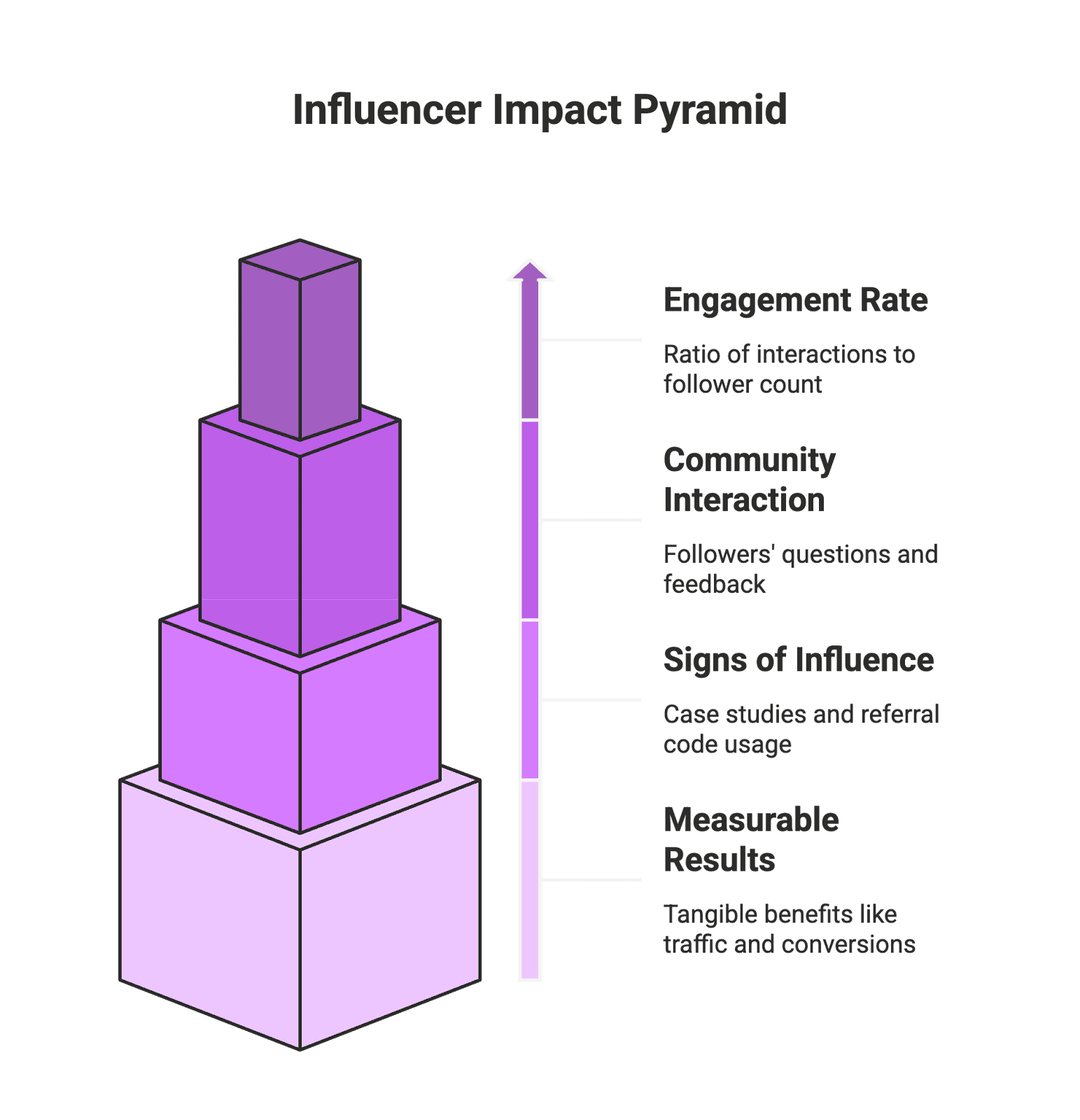Top 10 Characteristics to Look For in a Good Influencer
17th
July, 2025
Influencer Marketing
Amazon Marketplace
Artificial Intelligence
TikTok Tips
Ever wonder what sets a great influencer apart from the rest? In today’s digital world, leveraging influencer marketing is a go-to growth strategy – especially for e-commerce brands and Amazon sellers. From mega-stars to micro-influencers, the right content creator can help your products reach new audiences and drive sales. But not all influencers are created equal. Brands need to know which qualities make an influencer truly effective (and worth partnering with). In this blog post, we’ll break down the top 10 characteristics of a good influencer that attract brand attention. Our focus is on traits that matter most for e-commerce success – think authenticity, content quality, engagement, and more – all explained in a casual, informative way.
Influencer Marketing Trends: Platforms and E-Commerce

Before diving into individual traits, let’s set the stage with a quick look at influencer marketing today. Social media platforms are the playgrounds where influencers thrive, and a few big players dominate. TikTok has recently surged ahead as the most-used channel for influencer campaigns (employed by 69% of brands), surpassing long-time leader Instagram (47%) and YouTube (33%). This shift reflects where audiences (especially Gen Z and young millennials) are spending their time – short-form video platforms like TikTok are booming, though Instagram and YouTube remain hugely important for visuals and long-form content.
Most popular social platforms for influencer marketing in 2024. TikTok’s rapid rise (used by 69% of brands) has put it ahead of Instagram and YouTube as the go-to channel for influencer campaigns. Influencers who master these platforms – whether it’s engaging TikTok videos, Instagram Reels, or YouTube vlogs – can offer brands massive reach and creative content opportunities. It’s no surprise that marketers prioritize influencers on these top platforms when planning campaigns.
Meanwhile, e-commerce brands have embraced influencer marketing more than any other sector. Over 57% of brands working with influencers run online retail or e-commerce stores. Why the strong participation? Online sellers can directly link influencer content to their product pages, making it easier for followers to “shop now” on sites like Amazon or Shopify. Influencers effectively become digital brand ambassadors, driving traffic to e-commerce listings and boosting conversion rates.
Share of influencer-active brands that have e-commerce stores. More than half (57.6%) of brands engaging in influencer marketing are e-commerce businesses. This highlights how online brands – from boutique Shopify retailers to large Amazon sellers – rely on influencers to generate awareness, create UGC (user-generated content), and ultimately drive sales. An influencer who understands the e-commerce world (and how to seamlessly integrate product links or discount codes) is especially valuable to partner with.
With these trends in mind, let’s explore the 10 key characteristics that make an influencer stand out as a great partner for your brand.
1. Authenticity and Realness
Authenticity is the foundation of a good influencer. In a space flooded with polished ads and paid posts, the influencers who feel real and genuine rise above the noise. An authentic influencer is transparent about their opinions and only promotes products they truly like or find relevant. Crucially, their audience is made up of real followers – not bots or purchased likes. (No brand wants to pay for an “influencer” whose 100k followers turn out to be fake accounts!) In fact, authenticity is so important that 90% of consumers say it influences which brands they support. People are far more likely to trust recommendations from a relatable creator than a glossy ad. No wonder one survey found 82% of consumers are highly likely to follow a micro-influencer’s recommendation – micro influencers often come across as peers giving genuine advice, which carries huge weight.
So how do you spot authenticity? Look for consistency between an influencer’s content and their actual lifestyle or niche. Do they actually use the products they feature? Are they honest if something isn’t perfect? Authentic influencers also tend to have engaged communities that interact naturally (lots of genuine comments, not just generic praise or emoji spam). When an influencer is authentic, their endorsement feels like a friend’s suggestion, building trust with your potential customers. This kind of honesty and credibility is invaluable – an authentic influencer can lend your brand social proof that truly resonates.
2. High-Quality Content Creation (and UGC Skills)
Great influencers are content creation experts. At the end of the day, an influencer is only as good as the content they produce – be it stunning photos, engaging videos, catchy captions, or informative how-tos. For e-commerce and Amazon sellers, this content often doubles as user-generated content (UGC) that can be repurposed in your own marketing. You want influencers whose style and quality match your brand’s vibe. Review their feed: Are their photos/videos well-composed, clear, and scroll-stopping? Do they experiment with formats like Reels, Stories, Lives, or YouTube vlogs? Top influencers know how to showcase a product in an appealing way without it feeling like a traditional ad.
Brands are increasingly realizing the power of influencer-created content. In fact, 36% of marketers say that influencer content outperforms content produced by the brands themselves. This makes sense – influencers know how to speak the social media language authentically. Additionally, consumers tend to trust peer content more: in one study, 85% of people found UGC more influential than brand-created photos or videos. A good influencer provides a steady stream of authentic creatives for your brand. For example, an influencer might shoot a fun unboxing video of your product or post a tutorial using it; you can then (with permission) reuse that UGC on your own Instagram, website, or Amazon page. The ability to produce high-quality, relatable content that resonates with your target audience – and to do it consistently – is a hallmark of a top-tier influencer. When vetting influencers, look at their past posts and ask yourself: Would I be proud to have this content associated with my brand? If the answer is yes, you’ve likely found a strong content creator.
3. Passion and Genuine Enthusiasm
Scrolling through an influencer’s feed should give you a sense of their passion – both for their niche and for creating content. Passion is contagious; when an influencer genuinely loves what they do (and the products or lifestyle they showcase), their audience can feel it. This enthusiasm translates into higher excitement for your brand’s offerings. A good influencer will get truly excited about a collaboration if your product aligns with their interests. They’ll pour energy into the campaign, which in turn inspires followers to share that excitement. As Influencity notes, “Passion is what will fuel your campaigns, and it’s something that cannot be faked.”. If an influencer seems bored or just going through the motions, their content will reflect that – and viewers will tune out.
When researching influencers, look for those who light up when talking about topics related to your product. For example, if you sell fitness gear, an influencer who lives and breathes workouts (and excitedly shares new routines, personal progress, and tips) is likely to bring authentic passion to promoting your equipment. Their eyes sparkle when they unbox a new item; they can’t wait to demo it on camera. That enthusiasm creates an emotional connection with the audience. In short, choose someone who would use your product even if they weren’t paid – their genuine love for the niche will make the promotion feel natural and compelling. Passionate influencers go the extra mile, and that can make all the difference in a campaign’s impact.
4. Trustworthiness and Credibility
When you partner with an influencer, you’re essentially putting your brand’s reputation in their hands. That’s why trustworthiness is a critical characteristic to seek out. A trustworthy influencer is honest with their audience and with the brands they work with. They disclose sponsorships transparently (followers appreciate honesty about paid partnerships), and they don’t promote things they don’t believe in just for a quick payday. Their recommendations carry weight precisely because they’ve built a reputation for sincerity. As a brand, you need an influencer whose audience trusts what they say. If followers suspect an influencer will shill any product for a buck, those endorsements won’t be effective. On the flip side, an influencer who has earned credibility can seriously boost your brand’s authority. Consider that 84% of consumers trust peer recommendations over traditional advertising – an influencer is essentially a peer voice. You want that voice to be seen as reliable.
How do you gauge credibility? Look at the influencer’s history. Have they been involved in any scandals or spread misinformation? (Red flag!) Do they give balanced, fair opinions in reviews? Influencers who occasionally turn down sponsorships or provide measured critiques come off as more authentic and principled. Also, check if they maintain a consistent personal brand – no wild, out-of-character promotions. Trustworthy influencers often have loyal, long-term followers who stick around because they value the influencer’s judgment. Additionally, consider professionalism: Do they communicate well and set clear expectations with brands? An influencer who is organized and reliable in business dealings is more likely to handle your collaboration responsibly. Remember, a credible influencer not only keeps your brand’s image safe but can actively enhance your credibility by association.

Unlock the Power of Micro Influencers and Elevate your Brand Today!

5. Relatable Personality
Relatability is that special something that makes followers think “This person is just like me!” or “I could totally be friends with them.” Good influencers tend to be relatable in how they present themselves and their lives. They share everyday moments, admit imperfections, and speak in a conversational tone rather than sounding like a corporate press release. This down-to-earth vibe helps audiences form a personal connection. For brands, partnering with a relatable influencer means your product is being showcased by someone who feels like a friend to their followers. That dynamic can significantly warm up an otherwise skeptical audience. People are more open to hearing about a new snack, gadget, or fashion item if it’s coming from “someone like me” whose lifestyle or challenges mirror their own.
To identify a relatable influencer, look at how they engage and what they share. Do they only post picture-perfect, heavily edited shots, or do they also show behind-the-scenes bloopers and real-life struggles? The ones who aren’t afraid to be a bit vulnerable or goofy often come across as more genuine. Maybe they joke about Monday morning coffee dependence, share no-makeup selfies, or talk about balancing influencer life with kids or school – these touches make them human. When followers relate to an influencer, they trust their recommendations more because it feels like advice from a peer rather than a sales pitch. For example, an influencer who is a busy mom sharing quick healthy recipes can be highly relatable to other parents – if she then recommends a kitchen appliance, her followers are inclined to listen. In summary, relatability breeds trust and loyalty, which makes an influencer’s advocacy on behalf of your brand much more persuasive.
6. Responsiveness and Community Engagement
A great influencer doesn’t just broadcast content; they actively engage with their community. Being responsive – replying to comments, answering followers’ questions, and generally showing up for their audience – sets top influencers apart. This kind of engagement creates a sense of community and loyalty. When followers feel seen and heard by an influencer, they become more invested. For brands, an influencer who nurtures their audience like this is gold: their followers are not passive viewers, but an interactive community excited about what that influencer posts (including your sponsored content). Check an influencer’s posts – do you see them replying to a decent number of comments? Do they acknowledge feedback or thank fans? An influencer who comments “OMG yes 🔥” on a fan’s remark or addresses user questions in their next video is demonstrating responsiveness.
Beyond audience interaction, responsiveness also extends to how the influencer works with brands. You want a partner who is communicative, open to feedback, and timely in their responses during a campaign. If an influencer answers your emails promptly and is willing to discuss ideas or adjustments, it bodes well for a smooth collaboration. Influencity combines “relatable & responsive” as a key trait – essentially highlighting that a pleasant, sociable influencer who interacts regularly with followers is ideal. These influencers often foster higher engagement rates on their content because they’ve trained their audience to expect a conversation, not a one-way feed. In practical terms, a responsive influencer might host Q&A sessions about your product, respond to DMs asking for details, or promptly address any negative comments with grace. This not only boosts the content’s performance (thanks to more comments and shares) but also reflects well on your brand by extension. An engaged community can even provide user feedback or testimonials that enrich the campaign. Overall, when an influencer is responsive, they create a lively, interactive environment that your brand can positively be a part of.
7. Niche Alignment and Expertise
One size does not fit all in influencer marketing. A good influencer for one brand might be a terrible fit for another. That’s why niche alignment is key. You should look for an influencer who operates in a niche relevant to your product or brand – ideally, someone who is seen as an expert or at least a trusted enthusiast in that area. For example, if you sell organic skincare, an influencer who regularly posts skincare routines, product reviews, and has followers who care about beauty and wellness would be a strong match. Conversely, a travel vlogger or a tech gadget reviewer wouldn’t make much sense, no matter how large their following, because their audience isn’t primed for skincare content. An influencer’s expertise (or genuine interest) in your field lends credibility to your product. They can speak the lingo, anticipate what their followers might want to know, and integrate your product into their content more naturally.
When evaluating niche alignment, consider both content and audience demographics. Check the influencer’s topics and see if your product could logically be part of that narrative. Also, look at any available data on their audience (some influencers share stats about follower age, location, interests). Does it overlap with your target customer profile? For instance, a micro-influencer who focuses on outdoor gear and has a fan base of hiking enthusiasts would be perfect for an eco-friendly water bottle brand, but perhaps not for a high-fashion jewelry line. Collaborating within the right niche ensures the influencer’s audience will actually care about your message. It’s the difference between a lukewarm “okay, cool” reception and an excited “this is exactly what we need!” reaction. Remember, influence is contextual – even a smaller creator (nano or micro) can have outsized influence if they’re deeply embedded in a niche community that aligns with your market. In short, find influencers who “get” your space, and you’ll tap into an audience that’s primed to listen.
8. Platform Presence and Format Fit
Not all social platforms are equal, and a good influencer understands how to leverage the platforms that matter for your brand. When scouting influencers, consider where they have a strong presence and whether that aligns with where your customers hang out. The most popular platforms for influencers today are Instagram, TikTok, and YouTube, as we saw earlier, but within those, content format is key. Is the influencer a master of short-form video (TikTok/Reels)? Long-form storytelling (YouTube vlogs)? High-quality photos and carousel posts (Instagram feed)? Ideally, the influencer’s strengths should match the kind of content that best showcases your product. For example, an influencer known for engaging unboxing videos on YouTube might be perfect if you want a detailed demo of your gadget, whereas a TikTok comedian with quick sketches might be great for a snappy, viral take on your fashion item.
Platform fit also means ensuring the influencer’s audience on that platform is the one you want to reach. TikTok skews younger (teens and 20s), Instagram covers a broad range but is strong for 18-34, and YouTube can vary widely by content type. If you’re marketing an upcoming video game, a Twitch streamer or YouTuber might have more sway than an Instagrammer. On the other hand, lifestyle and beauty brands often still find Instagram influencers effective for shopping-oriented posts, and TikTokers for trend-driven products. A good influencer often diversifies across platforms too – many have a primary channel and secondary ones (e.g., an Instagram influencer who also runs a TikTok). This multi-platform presence can be a bonus, as it gives your brand multiple touchpoints. However, make sure they maintain quality across channels (repurposing content smartly rather than copy-pasting). Ultimately, you want an influencer who is fluent in the platform(s) your target audience uses, including knowing the latest features (like IG Reels, Stories stickers, TikTok sounds) to maximize engagement. An influencer with the right platform and format fit will deliver your message in the medium that has the most impact, whether it’s a viral dance challenge or a heartfelt vlog testimonial.
9. Consistency and Reliability
When a brand commits to an influencer partnership, there’s often a schedule or campaign plan involved – and nothing derails a campaign faster than an inconsistent partner. That’s why consistency and reliability are prized characteristics of a good influencer. Consistency means the influencer posts regularly and maintains a steady voice/style. If they suddenly go radio silent for weeks or their content quality swings wildly, it’s a red flag. You want someone who has shown that week in, week out, they can deliver engaging content. Consistency builds audience trust too: followers learn to expect that every Tuesday there’s a new tutorial, or every morning there’s a relatable anecdote on Stories. This habit formation means when your sponsored post comes along, the audience is there and attentive.
Reliability extends to how the influencer manages commitments. Do they deliver content to you for review on time? Do they stick to the agreed posting schedule? A reliable influencer treats their collaborations professionally – they’ll read the brief, adhere to FTC guidelines for disclosures, and execute the campaign as agreed. Look for signs of professionalism: perhaps other brands have tagged them or left positive comments like “Loved working with you!” which hint at a good experience. Some influencers even have media kits or managers, which can indicate they take their business seriously. Don’t be afraid to ask an influencer about their process and how they handle sponsored partnerships – the pros will have clear answers. In short, a good influencer is dependable. When they promise to do something, you can count on them to follow through (or communicate proactively if issues arise). This reliability not only makes your life easier but also ensures your campaign runs smoothly and on schedule. It’s the difference between a post that goes live promoting your holiday sale on the correct date versus an “oops, I forgot to post!” fiasco. Consistent, reliable influencers help your marketing stay on track and maintain a positive brand image.

Unlock the Power of Micro Influencers and Elevate your Brand Today!

Benefits of Leveraging AI in an Affiliate Marketing Program

Last but certainly not least, a top influencer should be able to deliver measurable results – or at least have the hallmarks of someone who can drive results. Two key metrics to examine are their engagement rate and any evidence of past successful collaborations. Engagement rate (the ratio of likes, comments, shares to follower count) is often a better indicator of influence than follower number alone. A creator with 50k followers and a 5% engagement rate is likely more impactful than one with 500k followers and a 0.5% engagement rate. In fact, smaller influencers often shine here: nano-influencers (<5k followers) have the highest engagement rates (~2.5% on average) while mega-influencers (>1M) only around 0.9%. This means micro and mid-tier influencers can sometimes offer the best of both worlds: a sizable reach and an actively engaged audience. When vetting an influencer, check if their followers actually interact – do they ask questions, give feedback, appear influenced by the content? High engagement suggests the influencer has a true community that pays attention, which increases the likelihood that a shoutout or recommendation will lead to clicks and conversions.
Beyond engagement, look for signs of influence on outcomes. Some influencers may share case studies or testimonials (e.g., “I used @InfluencerX for promo and saw a 20% sales lift”). While not always available, you can infer impact from things like referral codes usage, comments (“Just ordered this!”), or if the influencer is frequently re-hired by brands (implying they delivered good ROI). You might also ask for media kit stats like story views, link click rates, or audience demographics to ensure they match your goals (for example, if you want to drive Amazon sales, an influencer with above-average link clicks in Stories could be valuable). Stack Influence, for instance, specializes in micro-influencer campaigns that generate high engagement and authentic UGC, focusing on measurable outcomes for e-commerce brands. The bottom line: a good influencer’s value can be quantified. Whether it’s traffic, conversions, or content creation, they should bring tangible benefits to your brand. By prioritizing influencers with strong engagement and a track record (or clear potential) of results, you set your campaign up for success.
Conclusion to Top 10 Characteristics to Look For in a Good Influencer
In the rapidly evolving world of influencer marketing, e-commerce brands and Amazon sellers can gain a serious competitive edge by choosing the right influencers to work with. The top 10 characteristics we’ve outlined – from authenticity and passion to reliability and results – serve as a checklist for evaluating potential influencer partners. Keep these traits in mind during your influencer research: an influencer who ticks most (or better yet, all) of these boxes is likely to deliver not just eyeballs, but genuine engagement and trust that translate into sales.
Finding such well-rounded influencers may seem daunting, but the good news is that resources exist to help. Ultimately, successful influencer marketing comes down to forming authentic, value-driven partnerships. When you collaborate with influencers who are trustworthy, relatable, and truly engaged with their followers, your brand naturally becomes part of a story that audiences believe in. In turn, those audiences become your customers and advocates. So use this list as your guide, choose your influencers wisely, and watch your next campaign thrive! Good luck, and happy influencer hunting.

By William Gasner
CMO at Stack Influence
William Gasner is the CMO of Stack Influence, he's a 6X founder, a 7-Figure eCommerce seller, and has been featured in leading publications like Forbes, Business Insider, and Wired for his thoughts on the influencer marketing and eCommerce industries.
Want new articles before they get published? Subscribe to our Awesome Newsletter.
stack up your influence
turning creativity into currency
our headquarters
111 NE 1st St, Miami, FL 33132
our contact info
[email protected]
stack up your influence
turning creativity into currency
our headquarters
111 NE 1st St, 8th Floor
Miami, FL 33132


